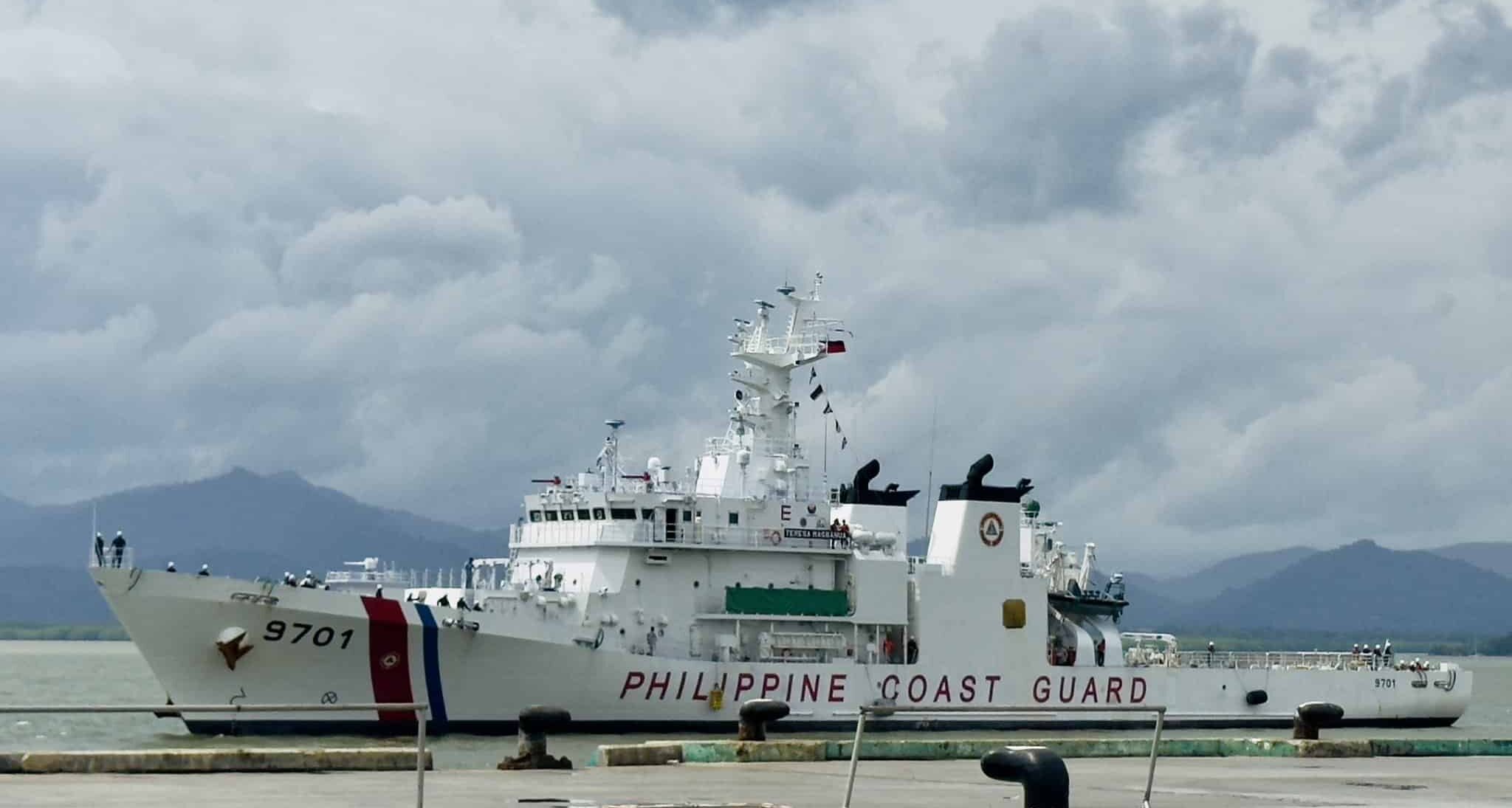US role pushed to help PH missions, deter China reclamation

SAFE AT PORT After a five-month patrol at Escoda (Sabina) Shoal, the BRP Teresa Magbanua has returned to port at Puerto Princesa City in Palawan province. The Philippine Coast Guard (PCG) vessel, which was rammed by the Chinese during its deployment to Escoda, will undergo repairs. —PCG photo
MANILA, Philippines — With the increasing Chinese presence at Escoda (Sabina) Shoal blocking supply missions to Filipino troops stationed in the West Philippine Sea, the Philippine government should now accept the offer of the United States to escort its ships in the disputed waters, former Supreme Court Senior Associate Justice Antonio Carpio said on Tuesday.
“We should have regular joint patrols with the US and accept the US offer to escort our resupply ships,” Carpio told the Inquirer in a Viber message on Tuesday.
His statement came days after the pullout of the BRP Teresa Magbanua, one of the Philippine Coast Guard’s (PCG) biggest and most modern ships, from Escoda after a five-month deployment.
READ: PCG says Escoda pull out not a repeat of Scarborough incident
Article continues after this advertisementThe 97-meter Teresa Magbanua was called to port and left the shoal on Sept. 14 for repairs and due to limited supplies and the health condition of its crew, who were forced to subsist on “lugaw” (rice porridge) for three weeks and on water dripping from the ship’s air conditioning unit.
Article continues after this advertisementRecent resupply missions to Escoda were unsuccessful due to the blockade of Chinese ships swarming the resource-rich shoal.
In his recent visit to Manila, US Indo-Pacific Command chief Adm. Samuel Paparo Jr. said US ships providing escort to Philippine vessels on resupply missions in the West Philippine Sea was “an entirely reasonable option within our Mutual Defense Treaty.”
But Armed Forces of the Philippines chief of staff Gen. Romeo Brawner Jr. earlier said the military was “very much capable” of doing the resupply missions “safely and successfully” despite repeated Chinese blockade of Filipino ships.
Physical presence
For Carpio, who was part of Manila’s legal team that won the 2016 landmark arbitral ruling on the West Philippine Sea, the Philippines should maintain its physical presence at Escoda.
“Since the Philippine Coast Guard suspects that China will reclaim Escoda Shoal, physical presence is important to expose and stop any reclamation,” he said.
Escoda, which is about 139 kilometers west of Palawan province, is within the Philippines’ 370-km exclusive economic zone.
In a separate message to the Inquirer, Don McLain Gill, a geopolitical analyst and a lecturer of international studies at De La Salle University in Manila, shared Carpio’s view, saying the Philippines should “supplement our presence” or pursue frequent joint patrols at Escoda with Manila’s allies.
“Physical presence is of utmost importance, particularly when it comes to maintaining our position in the West Philippine sea,” Gill said.
Having joint patrols in the West Philippine Sea, he said, would show that the international community of like-minded democracies [is] “watching China very closely.”
“I think it is perhaps timely to reconsider options that involve bringing in the United States as well, depending on how our next missions would go,” he said.
Escoda, according to Gill, has become “a critical flashpoint” and “a new hot spot for Chinese power projection.”
“[China is] an expansionist power and the only way to address the ambitions of an expansionist power is to ensure that there is a physical presence in order to push back,” he added.
Over 60 Chinese vessels have remained at Escoda despite the pullout of the Teresa Magbanua, the AFP said on Tuesday.
Data from the military showed that nine China Coast Guard vessels, four China warships, and 52 Chinese maritime militia vessels were swarming the shoal as of Sept. 16.
According to Rear Adm. Roy Vincent Trinidad, Philippine Navy spokesperson for the West Philippine Sea, China does not control Escoda despite the pullout of Teresa Magbanua.
Prepare for ‘longer game’
“Presence is not only defined as physical presence,” Trinidad said. “There are a range of different capabilities that are sea-based, air-based, or space-based—that we are developing in conjunction with our partners and allies to be able to monitor not only Escoda but the entire West Philippine Sea.”
He pointed out that there were contingencies in place for the military’s Western Command based in Palawan “to compensate for the absence of one.”
On Monday, the National Maritime Council (NMC) said another PCG vessel was on its way to Escoda after Teresa Magbanua left the shoal.
The NMC had yet to provide updates on the status of this PCG ship on Tuesday.
Ray Powell, director of SeaLight, a maritime transparency initiative of the Gordian Knot Center for National Security Innovation at Stanford University, said Manila should prepare for the “longer game” as China continues to face opposition from all directions.
“The Philippines will need to play a longer game, recognizing that Escoda itself is not a primary objective of this long struggle. This is a contest over maritime sovereignty, and China is in danger of overextending itself while it has a host of other strategic, military and economic challenges at home and abroad,” Powell said in a message to the Inquirer on Tuesday.
“While China’s current control of Escoda Shoal may seem like a setback, it is a more symbolic than strategic objective,” he said.
For comprehensive coverage, in-depth analysis, visit our special page for West Philippine Sea updates. Stay informed with articles, videos, and expert opinions.